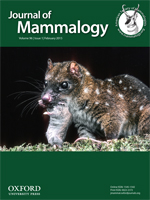Foraging animals must weigh the benefit of seeking food against the risk of becoming food, and the value of a given food should factor into this decision. We examined the separate and joint effects of food-safety tradeoffs and food chemistry on the foraging of free-ranging samango monkeys (Cercopithecus (nictitans) mitis erythrarchus) at Lajuma, South Africa. We conducted giving up density (GUD, the amount of food left behind by a forager) experiments with peanuts treated with secondary compounds (quebracho tannin, tannic acid, or oxalic acid) offered in safe and risky microhabitats. Effects of the compounds would manifest as higher GUDs relative to a control treatment. Moreover, secondary compounds should cause a greater increase in GUDs in the risky microhabitat. GUDs were higher in patches containing oxalic acid-treated peanuts than in patches with either of the tannin—treated or the untreated peanuts. Moreover, the samangos experienced an interaction of predation costs and secondary compounds: the GUDs on oxalates relative to control peanuts were higher in the risky microhabitat. As predicted, the samangos traded food for safety, and the effect was most pronounced when the control was paired with the least desirable food (oxalic acid). We provide evidence that the marginal value of energy is influenced by the presence of plant toxins, the predation cost of foraging, and the interaction of the two.
How to translate text using browser tools
1 February 2015
The influence of food chemistry on food-safety tradeoffs in samango monkeys
Sara E. Emerson,
Joel S. Brown
ACCESS THE FULL ARTICLE

Journal of Mammalogy
Vol. 96 • No. 1
February 2015
Vol. 96 • No. 1
February 2015
Cercopithecus (nictitans) mitis erythrarchus
food-safety tradeoffs
giving up density
plant secondary compounds
predation risk
samango monkey




